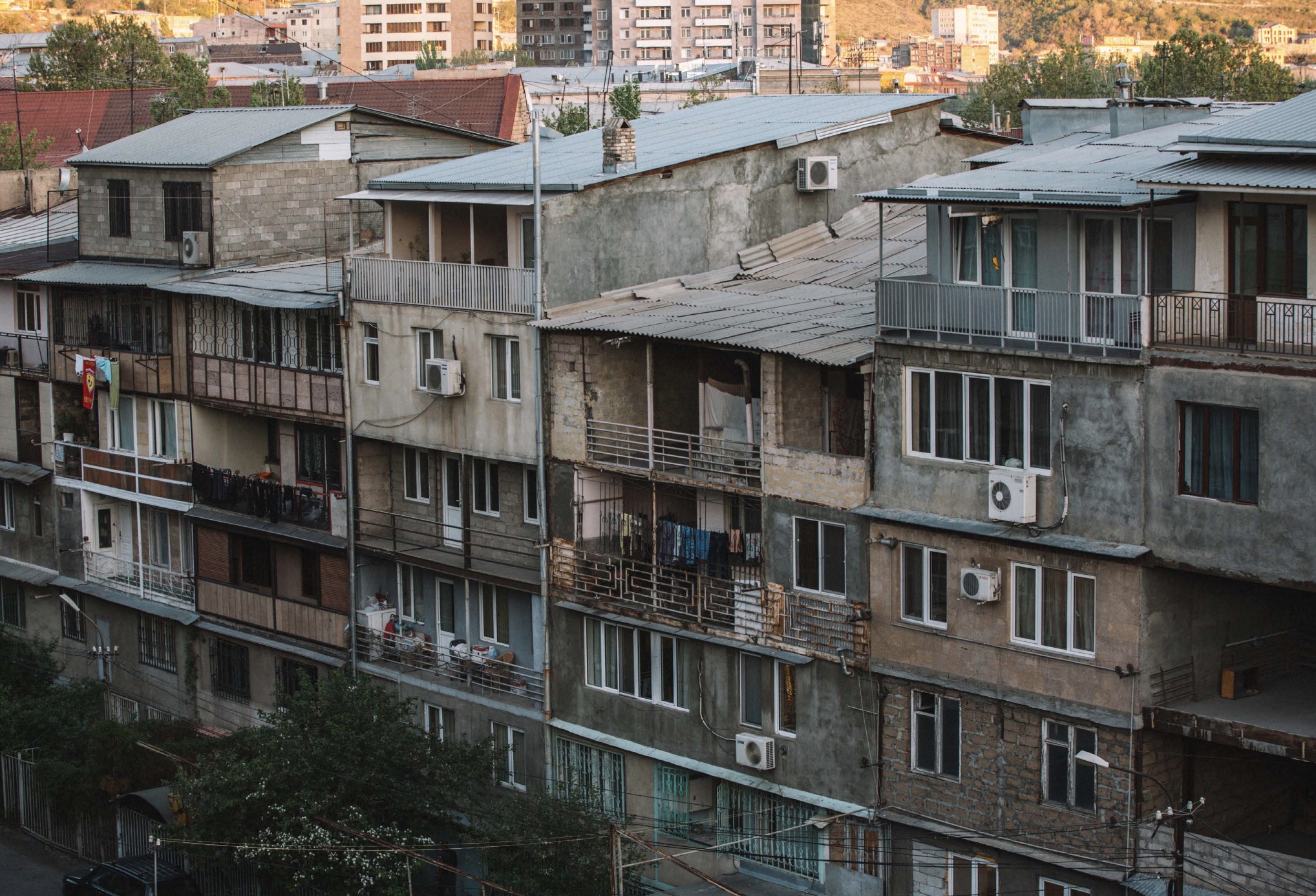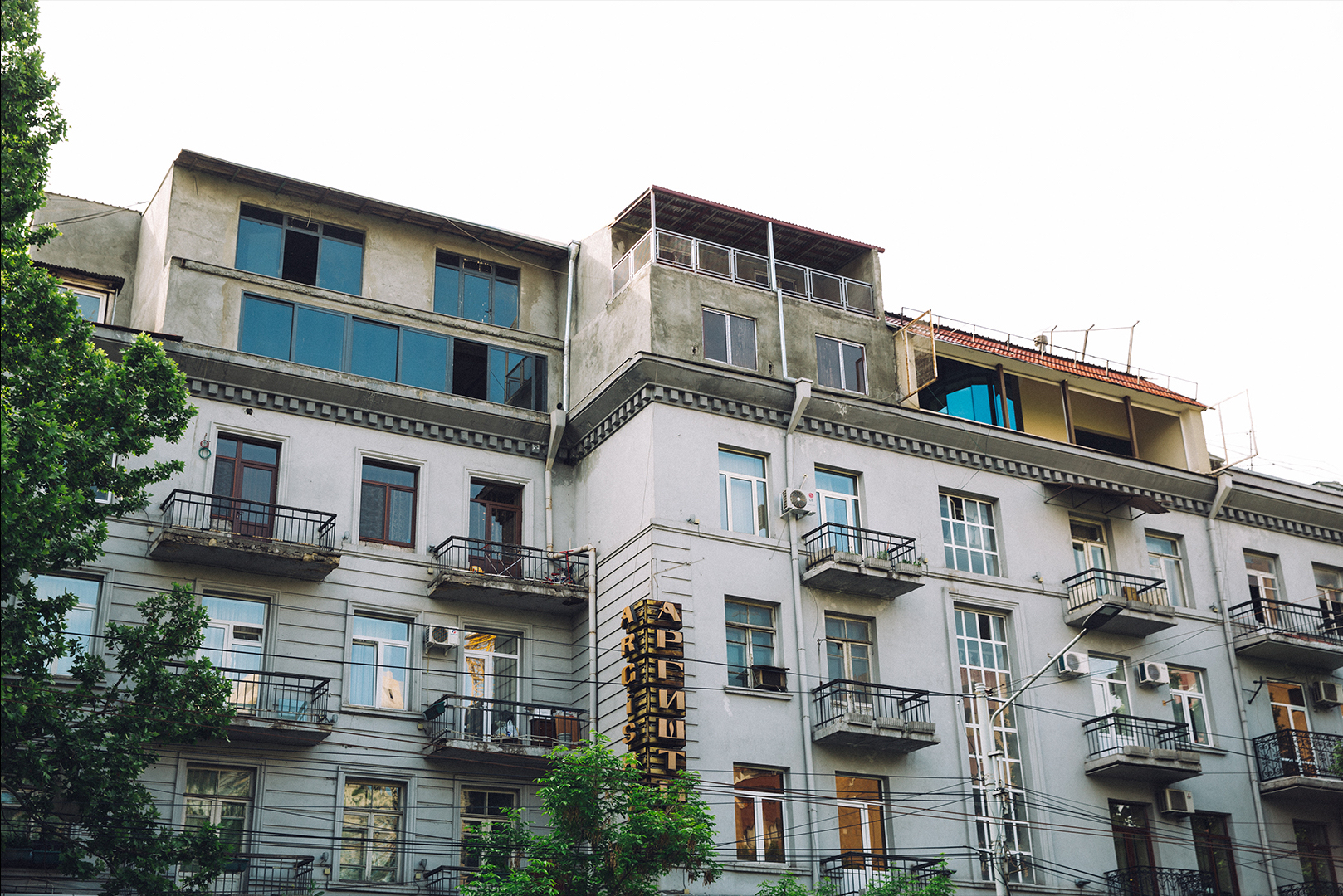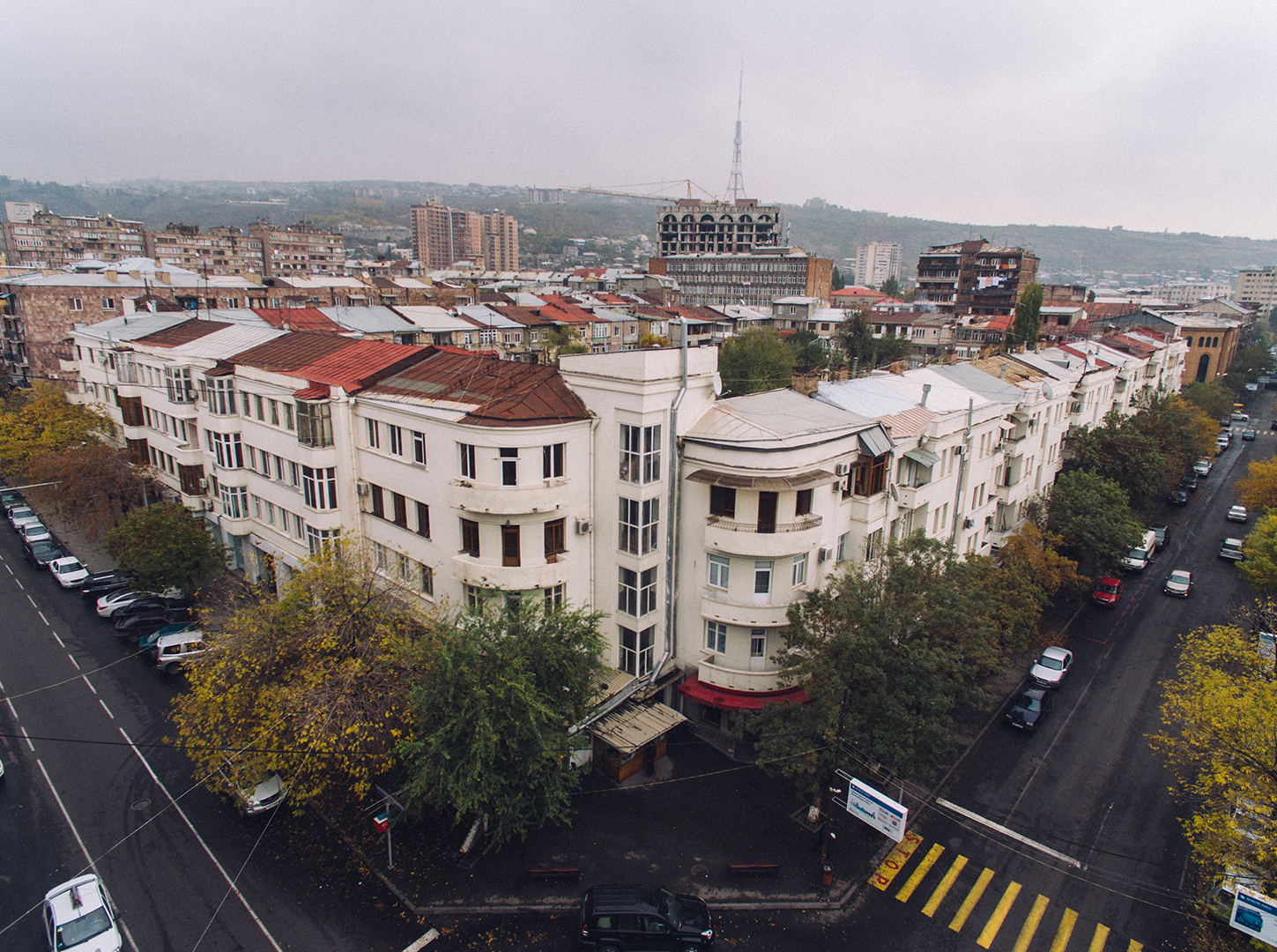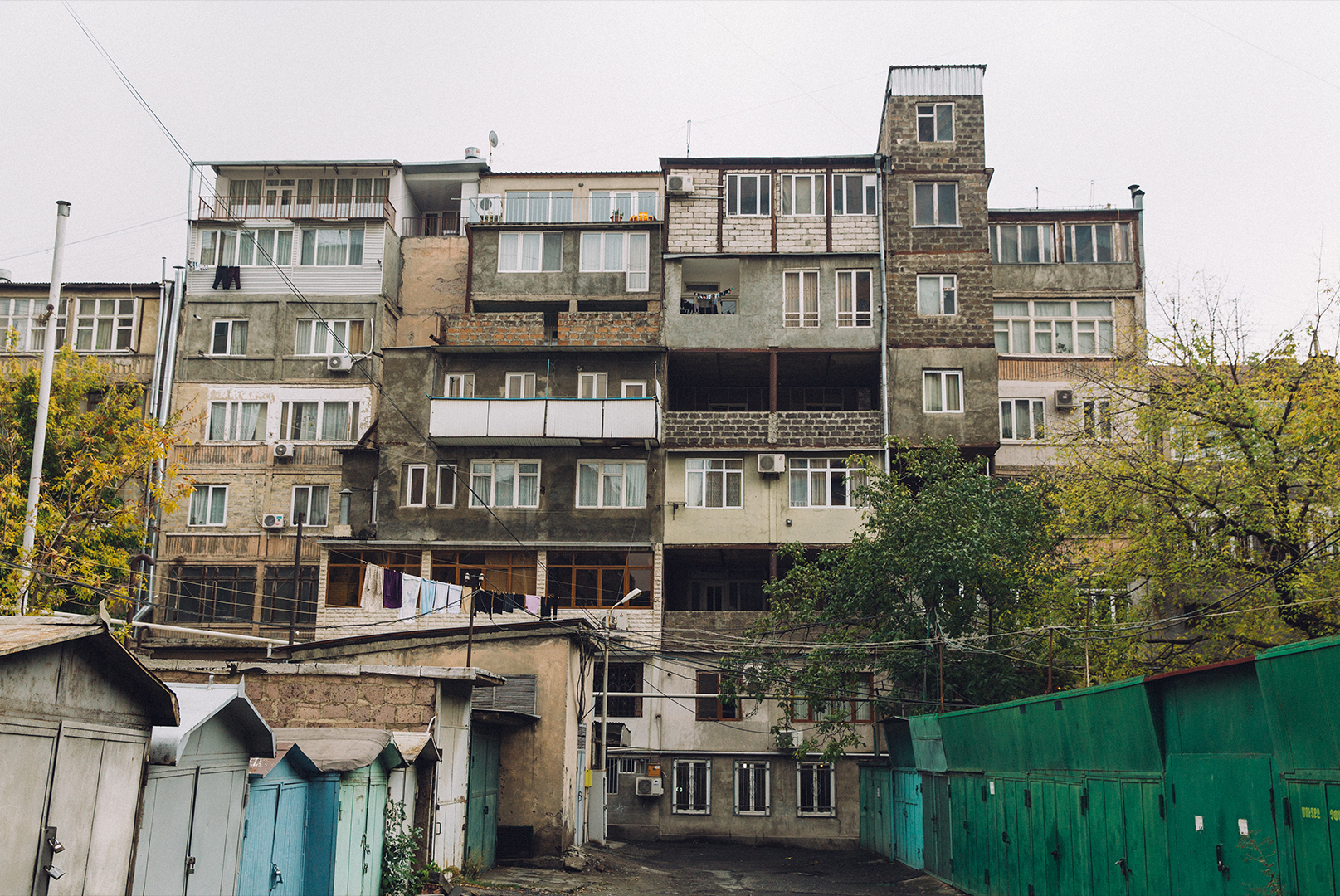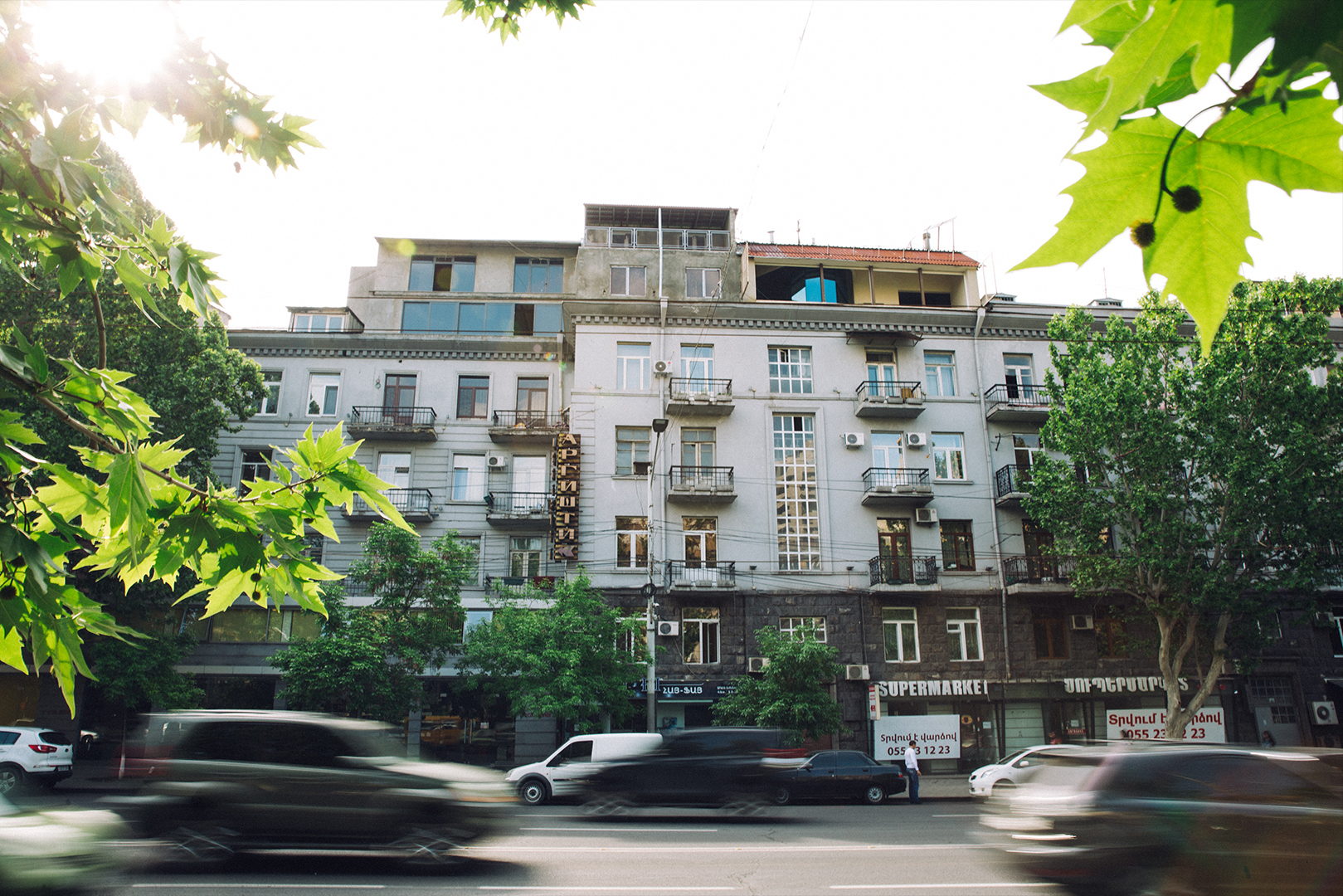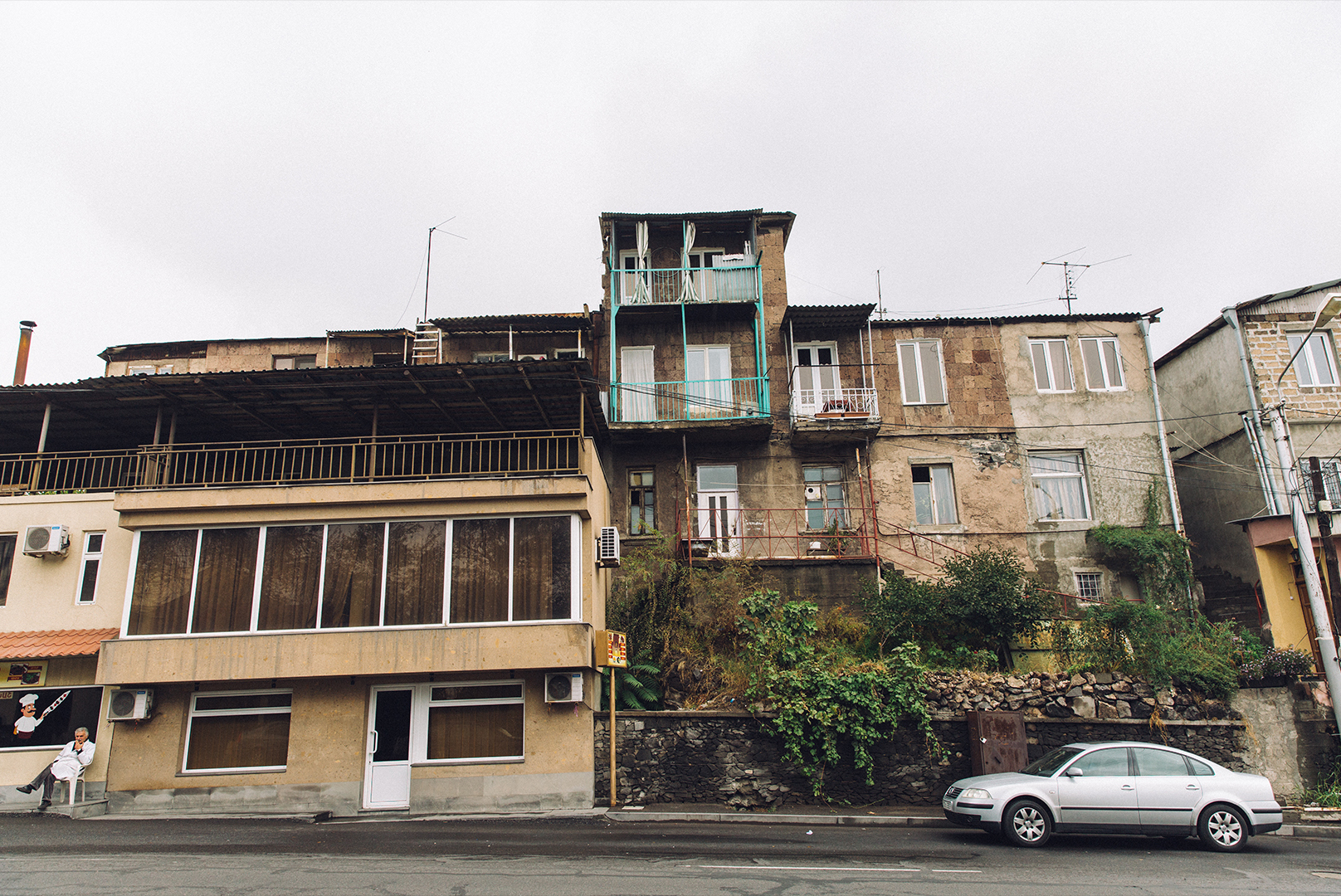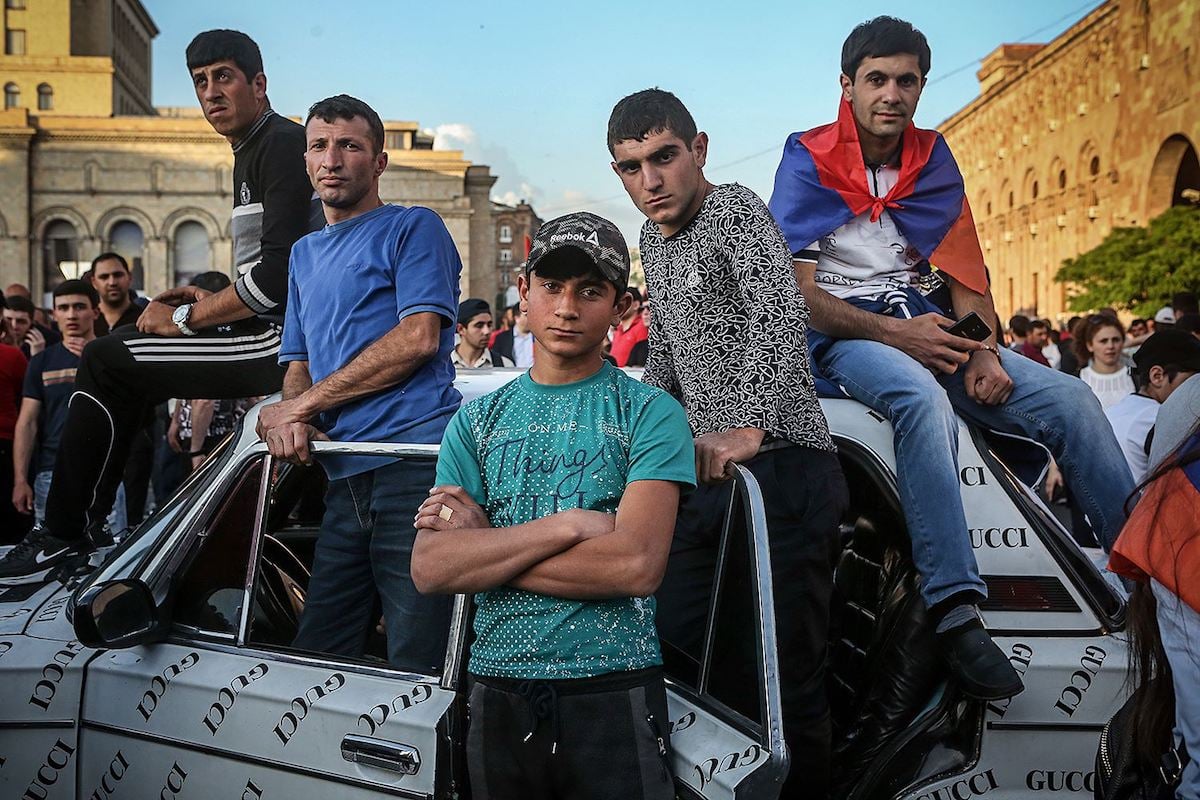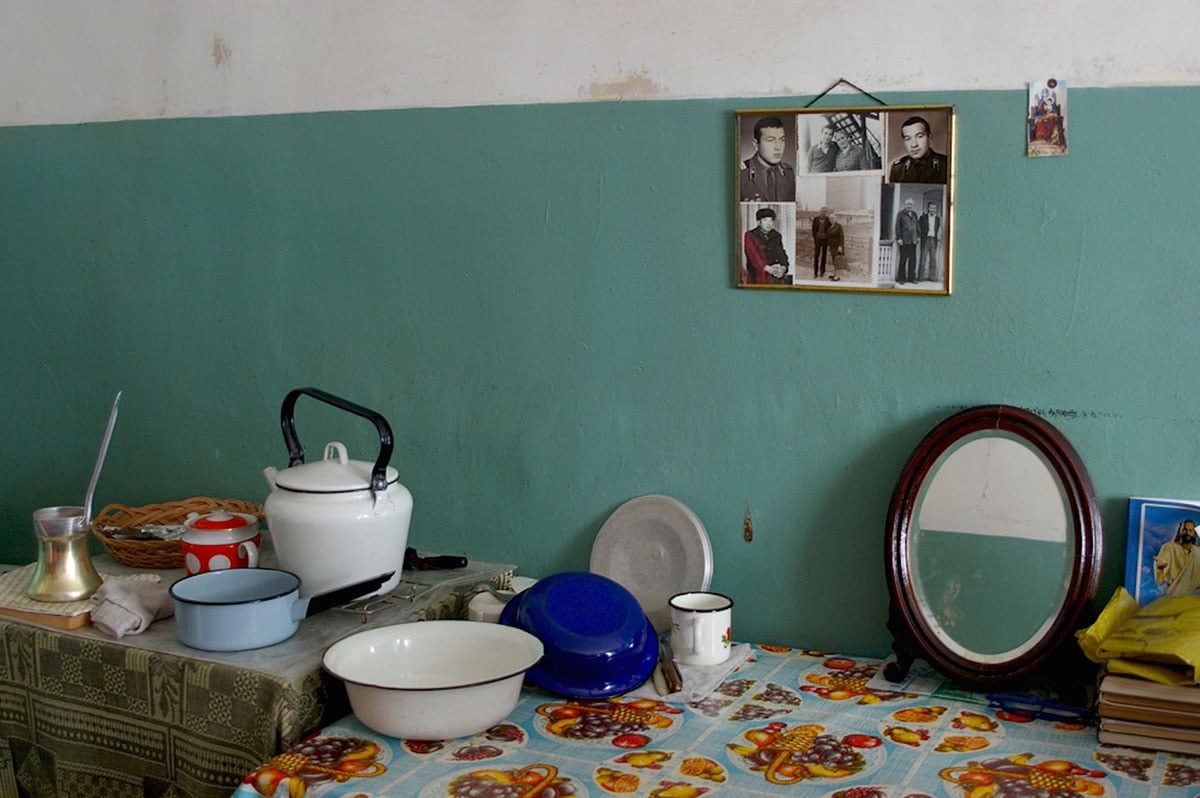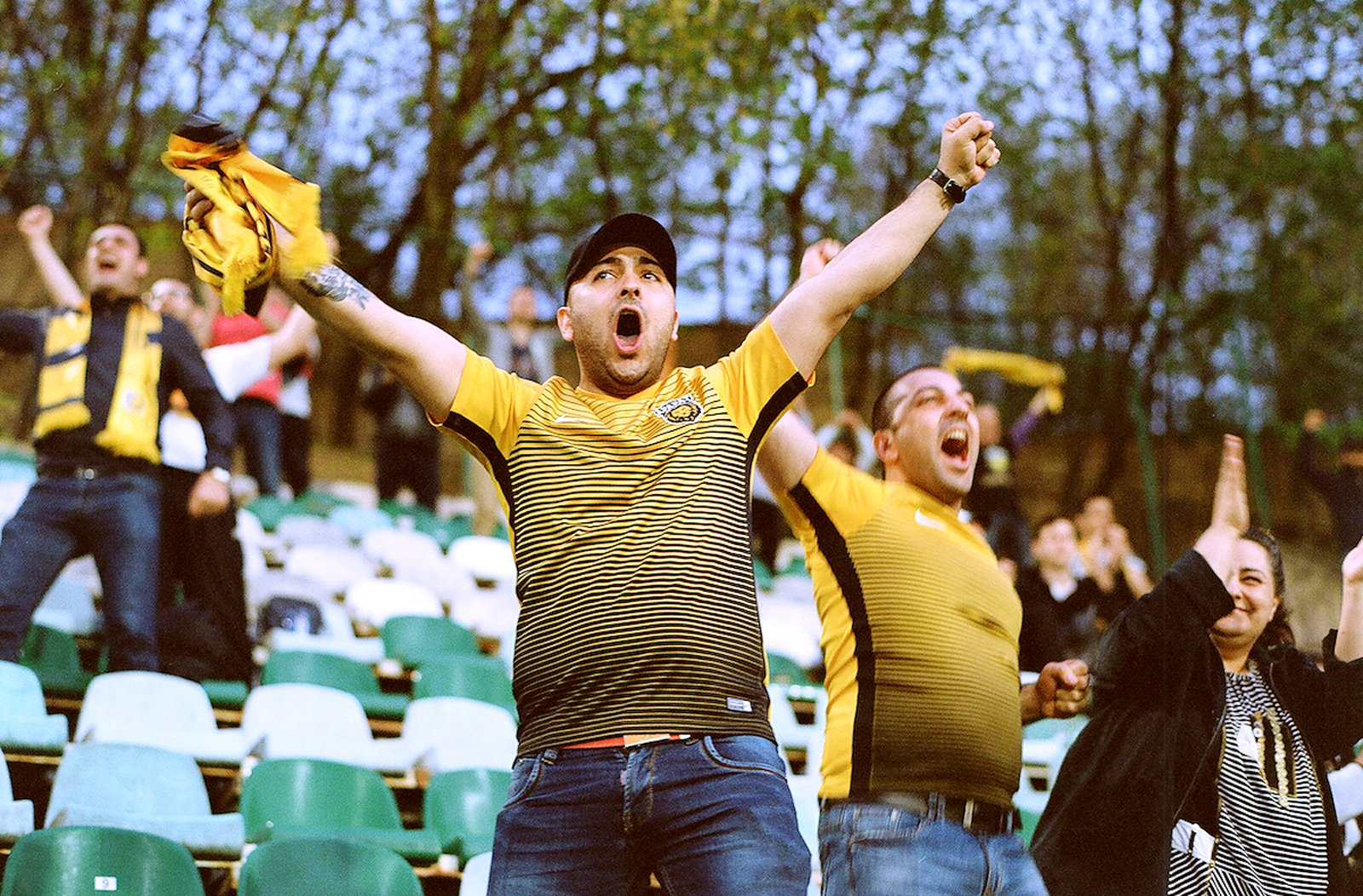Can post-revolution Yerevan get to grips with its informal architecture epidemic?
The urban fabric of Yerevan has been shaped over decades by endless miniature extensions, expansions, and modifications. The results might have character, but they also represent a constant challenge to town planners, as well as a a threat to their inhabitants. After last year’s revolution, can the Armenian capital get a grip on its architecture before it’s too late?
Yerevan is a city where the monumental meets the informal. The centre of the Armenian capital is a grand, planned ensemble, but it is also home to an astonishing array of ad hoc architecture: balcony extensions, courtyards colonised by garages and outhouses, converted basements spilling up onto the street — even entire villages erected haphazardly on the roofs of apartment blocks. In the wake of last year’s revolution, can the city’s complex relationship to its informal architecture be resolved?
As curator of the Armenian pavilion at the 2016 Venice Biennale, urbanist Sarhat Petrosyan highlighted Yerevan’s informal explosion with a project entitled Expanded Housing; now, as Head of the Committee of Real Estate Cadastre for the post-revolutionary government, he is partly responsible for addressing it. In an interview, he tells me that, while Yerevan is far from unique amongst post-socialist cities in its prevalence of informal architecture — Tbilisi and Bucharest are other prominent examples — the scale of the phenomenon sets it apart: “In central Yerevan, it’s hard to find a single building that doesn’t have something on top of it.”
The informal explosion was kickstarted by a 1963 decree from Moscow that each Soviet citizen be granted 14 square metres of living space, rather than the previous standard of nine. “Because the government was the only developer, they had a serious burden on their shoulders,” Petrosyan says. “They solved this issue by letting people cover their balconies to increase the amount of indoor space.” The practice of covering and extending balconies, known locally as shoushabands, marked the first stage in a spiralling process of public space lost to privacy.
“In central Yerevan, it’s hard to find a single building that doesn’t have something on top of it”
For Ruben Arevshatyan, a curator, historian, and director of Armenia’s National Museum-Institute of Architecture, the rise of informality reflected “complex relations between the people living in these buildings, the architects who designed them, and politicians who were turning a blind eye.” What began as a genuine state-led attempt to improve living conditions in a period of intense urbanisation took on what Arevshatyan calls “a psychological aspect. It became a culture. The late Soviet citizen tried to ‘occupy’ communal spaces, exploiting the confusion at the time concerning the essence of collective space.”
This new “culture” advanced in stages. After shoushabands came the expansion in the 70s and 80s into the interior courtyards of residential buildings, with garages and extensions crowding out what had been shared space. In the late 1980s, the Soviet government allowed citizens to own small shops, and converted ground-floor flats began to overflow onto the pavements. This was followed by the appropriation of attics and finally rooftops, resulting in the striking, precarious “Mansards” that now squat on top of Yerevan blocks.
By the time the Soviet Union collapsed, small-scale private construction had been underway in Armenia for decades. What changed with the 90s was the withdrawal of municipal supervision, and the cementing of a strongly individualistic approach to city space. “At some point you take away the control, people have freedom, and they start to invade common assets,” says Petrosyan. “Each resident started to rebuild the top floor of their building based on their own needs, tastes, financial capacities. You’re talking about a very individualistic society where ownership rights are crucial.”
For Ruben Arevshatyan, Soviet-era informality was a Pandora’s box. “After the fall of the system, architects understood that this process could no longer be reversed,” he explains. “They started to struggle against it but it was already too late because society itself had changed.” As elsewhere, the post-Soviet collapse in central government oversight also created a feeding frenzy for unsavoury developers, who, like their Soviet citizen forebears, simply build where they want; what had been meant as a small-scale accommodation on the part of the state was ultimately writ large across the city as, in Arevshatyan’s words, “the “informal’ attitude became the official approach of both the government and developers.”
Petrosyan points to another post-Soviet complication. “Because a huge amount of the real estate didn’t belong to anyone, it was easy to privatise — which creates corruption. And the funny thing is that, in most cases, people have legal papers for these extensions.” In the 2000s, city authorities began issuing ownership documents to residents who were trying to nail down claims over their tiny parcels of territory — cementing these teetering balconies and rooftop sheds as legal entities. Now that informal construction has hardened into legal precedent, any attempt to untangle Yerevan’s real estate knot will prove tortuous. Petrosyan is well aware of this: he’s now the head of the committee that issued these papers in the first place.
The 2018 revolution that replaced former Prime Minister Serzh Sargsyan with Nikol Pashinyan and his My Step Alliance group should mark an opportunity for Armenian urbanists. Informality is, after all, a problem. There may be a DIY charm to these constructions, but in a nation prone to earthquakes, they are also dangerous. Petrosyan points out that even after the 1988 Spitak quake in northern Armenia, in which at least 25,000 people were killed, “people continued to do things to weaken the structure of their buildings. You have a nine-storey building in central Yerevan with a village on the roof — three-floor additions on top of four-storey buildings without anything attaching them to the structure. With one single earthquake, everything will collapse. It’s laughable but it’s a sad story.” With no quick solutions in sight these structures (and their inhabitants) are living on borrowed time. The stakes are high.
There may be a DIY charm to these constructions, but in a nation prone to earthquakes, they are also dangerous
“We have to work hard because even among professionals we don’t have a consensus as to how to address it,” Petrosyan continues. “We don’t have legislation or tradition. We have to invent all these things from scratch.” Both Soviet urban planners and their successors failed to invest in proper research and strategic thinking. For instance, there is hardly any official documentation detailing what can and cannot be built on plots in Armenia; as a result, Petrosyan points out, “you could buy some land in Yerevan and build a single-storey family house — then your neighbour could buy some land and build a 16-storey block.”
Petrosyan is clear that any solution to Yerevan’s informality conundrum will come through the careful development of new planning guidelines, rather than top-down administrative decrees. But the problem is so deeply rooted that it is hard to see a way out. Ruben Arevshatyan sees the current mess as an extension of the broader 20th-century battle for the soul of cities: “Conceptually there is still this struggle between a modernist vision of the city and an older vision, even as we enter the postmodern, neoliberal era. The new government has come up with the same ‘modernist’ attitudes to get rid of this architecture — but there is no recipe for how to do that. The scale is too enormous.” His suggestion is to try and learn from the situation. “Some of these buildings, in their architectural imagination, are quite bold,” he laughs. “When you try and understand the psychology of these extensions, it goes deep inside broader cultural problems.”
Psychology may be the key word here. Since it is hard to imagine any feasible practical solution — demolishing these structures would be expensive, logistically nightmarish, and almost certainly highly illegal; regulating them scarcely easier — we might as well think along more anthropological lines. Even if urban planning is streamlined post-revolution, there will be a social aspect to any progress made. The movement that brought the government Petrosyan now works for to power saw an explosion of civic activism, as people took to the streets of Armenia’s towns, co-opting urban space towards a common goal. That kind of large-scale communal thinking will be needed to overcome the individualistic impulse towards private ownership rights that has led to the current impasse. “Over time, we need to change the situation,” Petrosyan says, “so that people refuse to use these structures and understand that claiming public space is unacceptable — that they need to give it back to society.” Informality in architecture is so often an expression of individual impulses. In Armenia, that may no longer be tenable.
